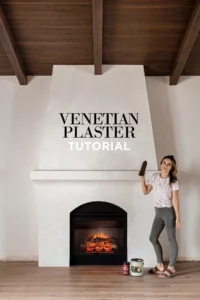Venetian wall finishes, an ancient technique that traces back to Venice in the 1500s, have made a roaring comeback in modern interior design. These timeless finishes, known for their beautiful texture and depth, take the design world by storm.
But what exactly are Venetian wall finishes, and why have they become the go-to choice for homeowners and designers? Let’s delve into the artistry and versatility of this mesmerizing trend.
Call Now Today :
Defining Venetian Wall Finishes
Venetian wall finishes are a decorative plaster technique that uses layers of putty made from marble dust and lime putty. The layers are applied meticulously to create a luxurious, smooth surface with the illusion of depth and texture.
Sometimes, it’s polished to a high sheen, making it look like polished marble or natural stone. The finishes are often associated with rich hues and a lustrous appearance that adds character and sophistication to any interior space.
Historical Significance
Historically, Venetian wall finishes answered the demand for highly durable and visually striking wall surfaces, especially in Venice’s lavish palaces and buildings. Venice had easy access to lime and marble powder as a port city.
The combination of these materials and the skilled craftsmanship of the Venetian artisans led to the development of these opulent wall finishes, which became a symbol of wealth and luxury.
Contemporary Adoption
Fast forward to the 21st century, and Venetian wall finishes are making waves in the contemporary design landscape. Modern homeowners constantly seek ways to incorporate timeless elegance into their spaces, and Venetian plaster is the perfect answer. Interior designers and architects are using this technique not only for its aesthetic appeal but also for its durability and versatility. Venetian plaster can be applied in many settings, including living rooms, bathrooms, and commercial spaces.
Environmental Friendliness
A significant reason for the resurgence of Venetian wall finishes in modern design is their eco-friendly nature. The core materials, lime and marble dust are natural and non-toxic. Moreover, the plaster acts as a breathable coating, allowing moisture to evaporate. This prevents mold or bacteria buildup, contributing to a healthier indoor environment. In an age where sustainability is paramount, the environmentally-conscious attributes of Venetian plaster make it an appealing choice.
Customization and Creativity
One of the highlights of Venetian wall finishes is the limitless creativity they offer. Designers can manipulate the texture, color, and level of polish to create bespoke surfaces. This can range from a heavily textured, rustic finish reminiscent of ancient stonework to a smooth, glossy surface that exudes modern luxury. The ability to customize the finish to suit the specific tastes and needs of the client is an essential aspect of its popularity.
Practicality and Maintenance
Aside from aesthetics, Venetian wall finishes are practical. They are remarkably durable and can last several decades without fading or chipping. Additionally, the finish is low maintenance. Simple dusting and occasional cleaning with a damp cloth are all required to keep it looking spectacular. This combination of beauty and practicality makes it a favored choice for residential and commercial applications.
Related Article:
How Much Does It Cost to Apply Venetian Plaster?
Creating an authentic Italian ambience with Venetian plastering
Conclusion
In a world where design trends come and go, the resurgence of Venetian wall finishes is a testament to their timeless beauty and versatility. With the benefits of being environmentally friendly, highly customizable, and low maintenance, it’s no wonder these finishes have carved a niche in modern design. Venetian wall finishes are impeccable if you want to add a touch of historical opulence or contemporary sophistication to your space.
